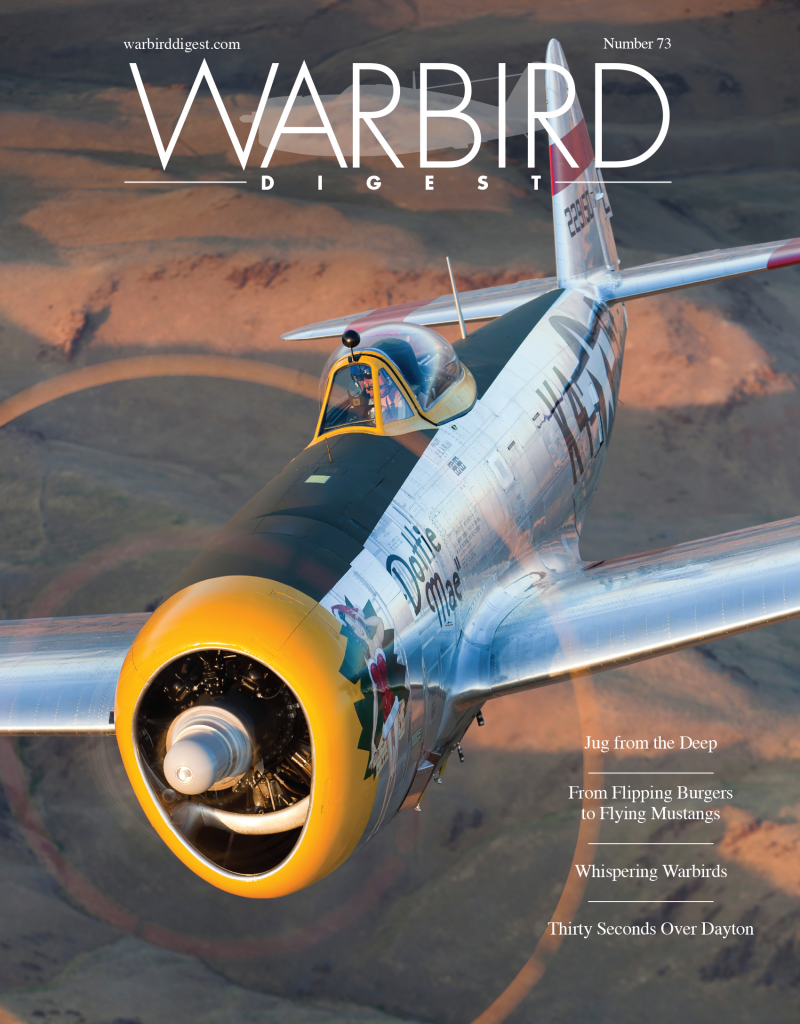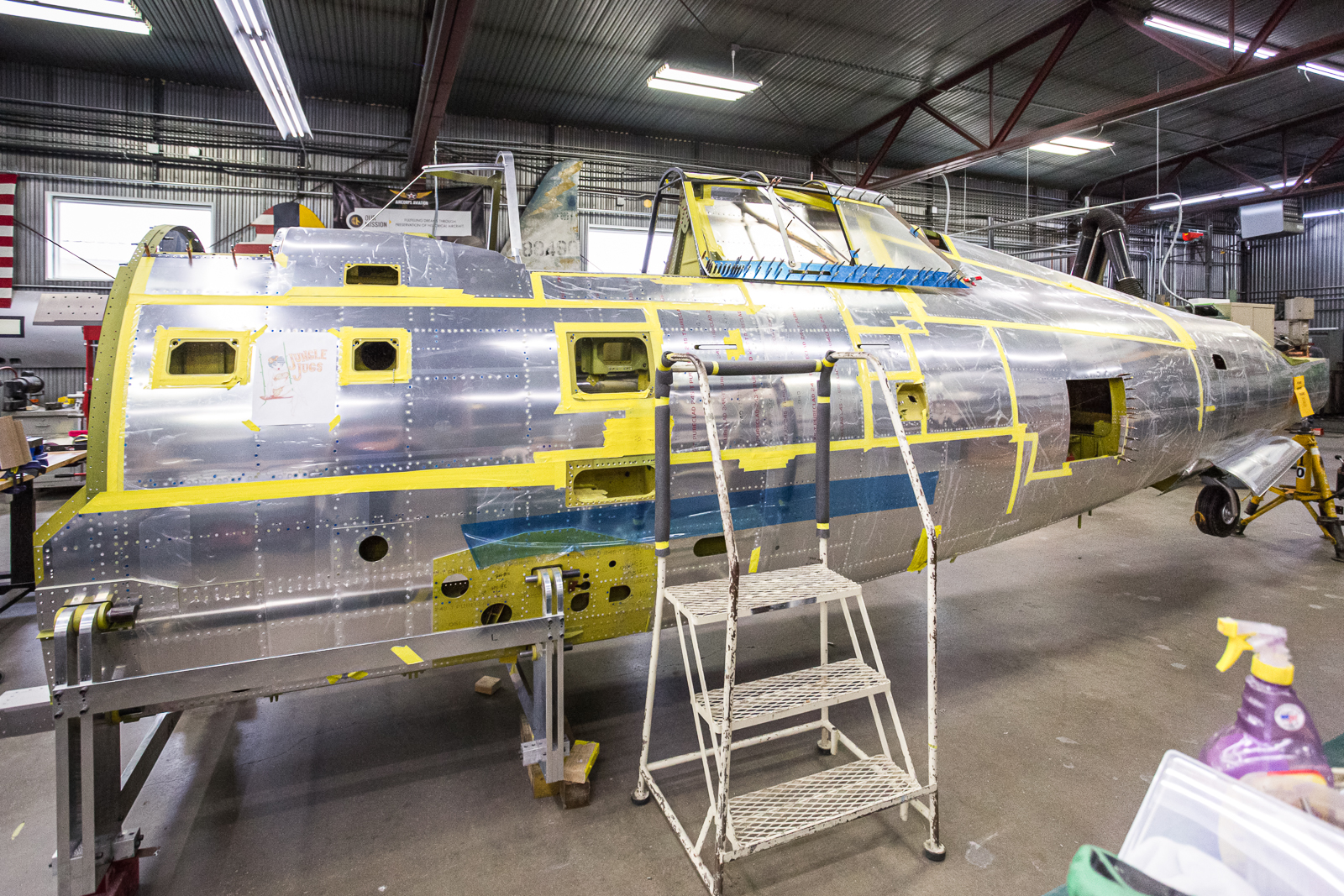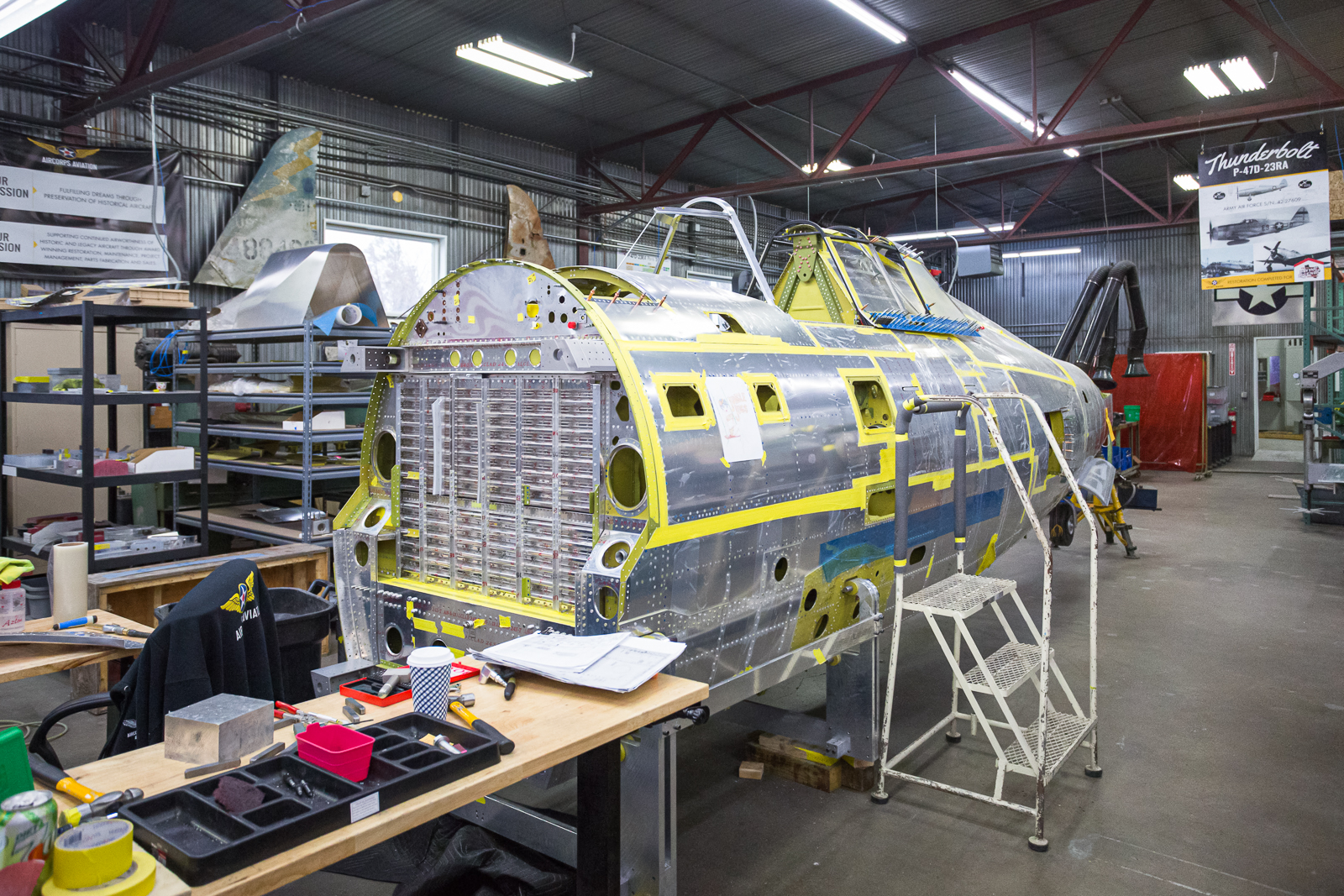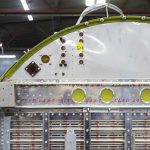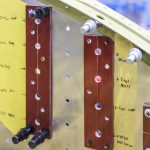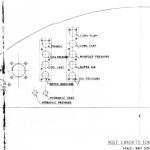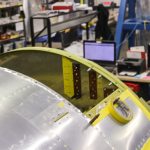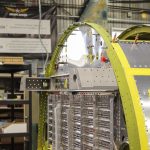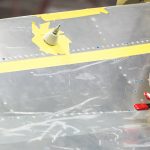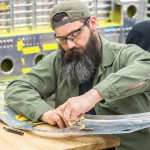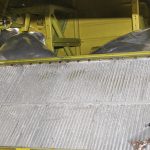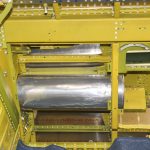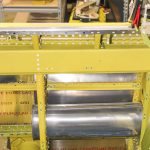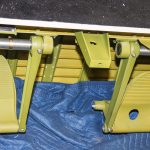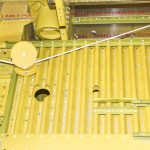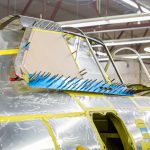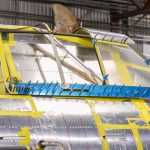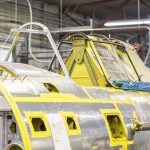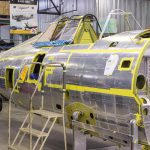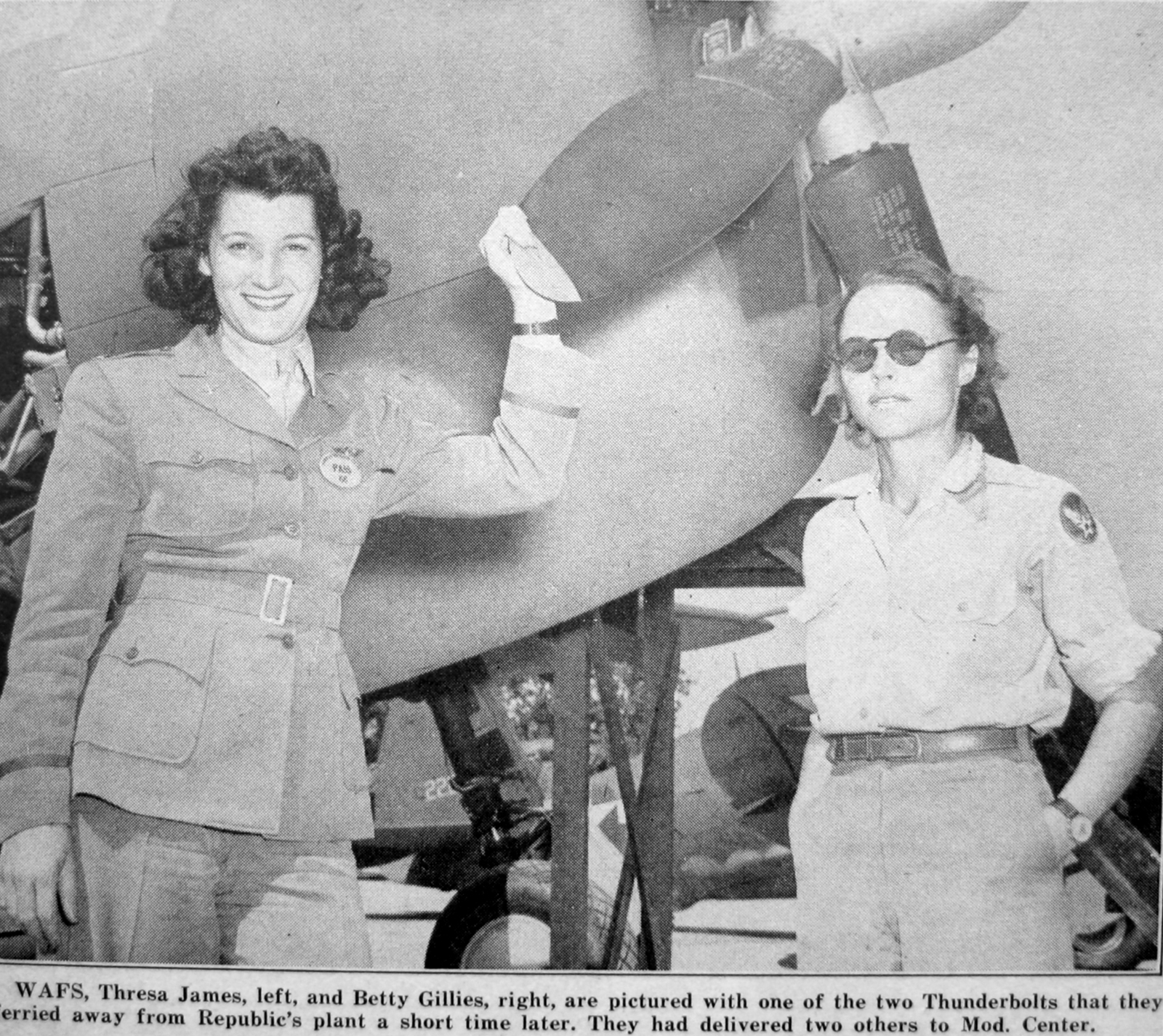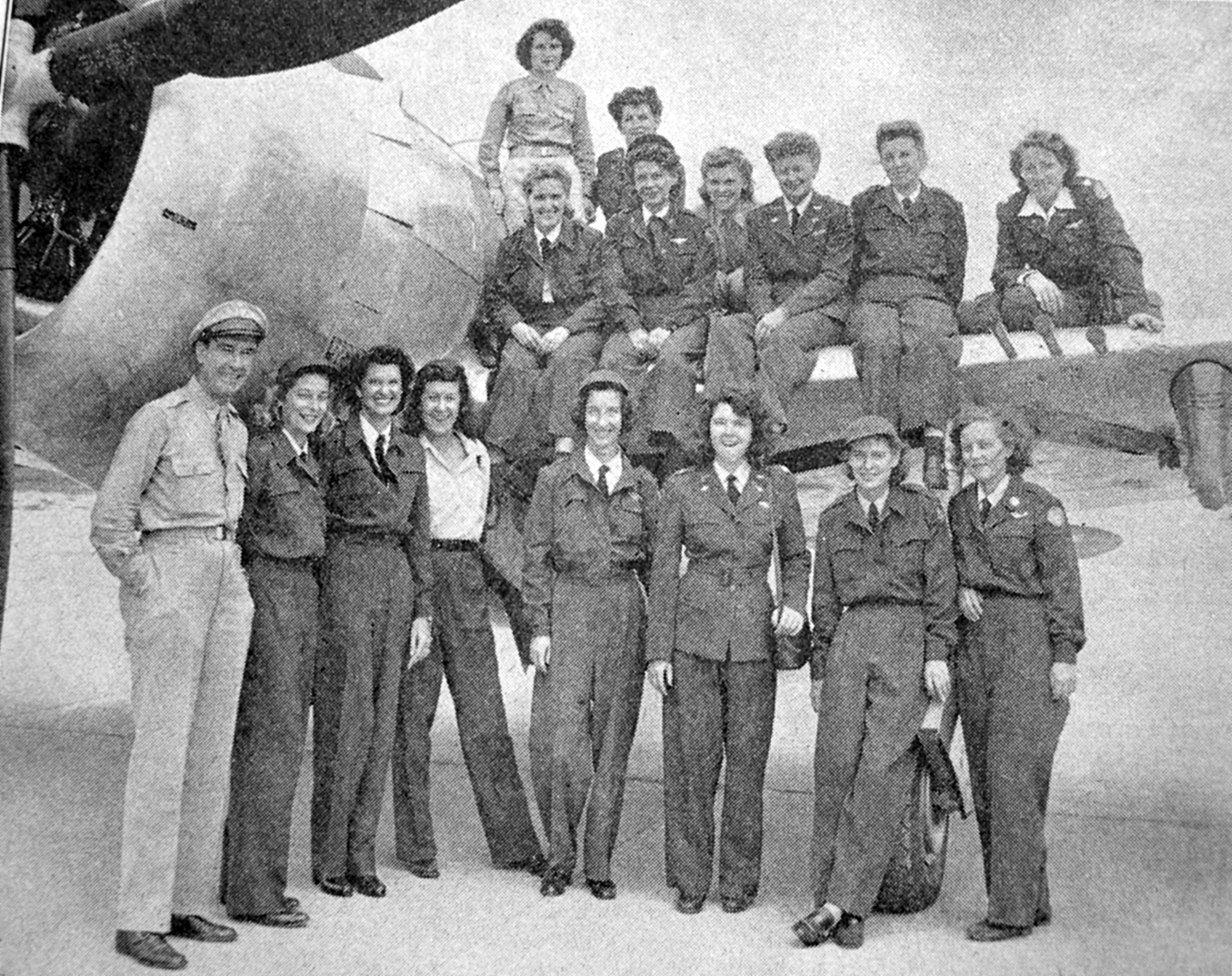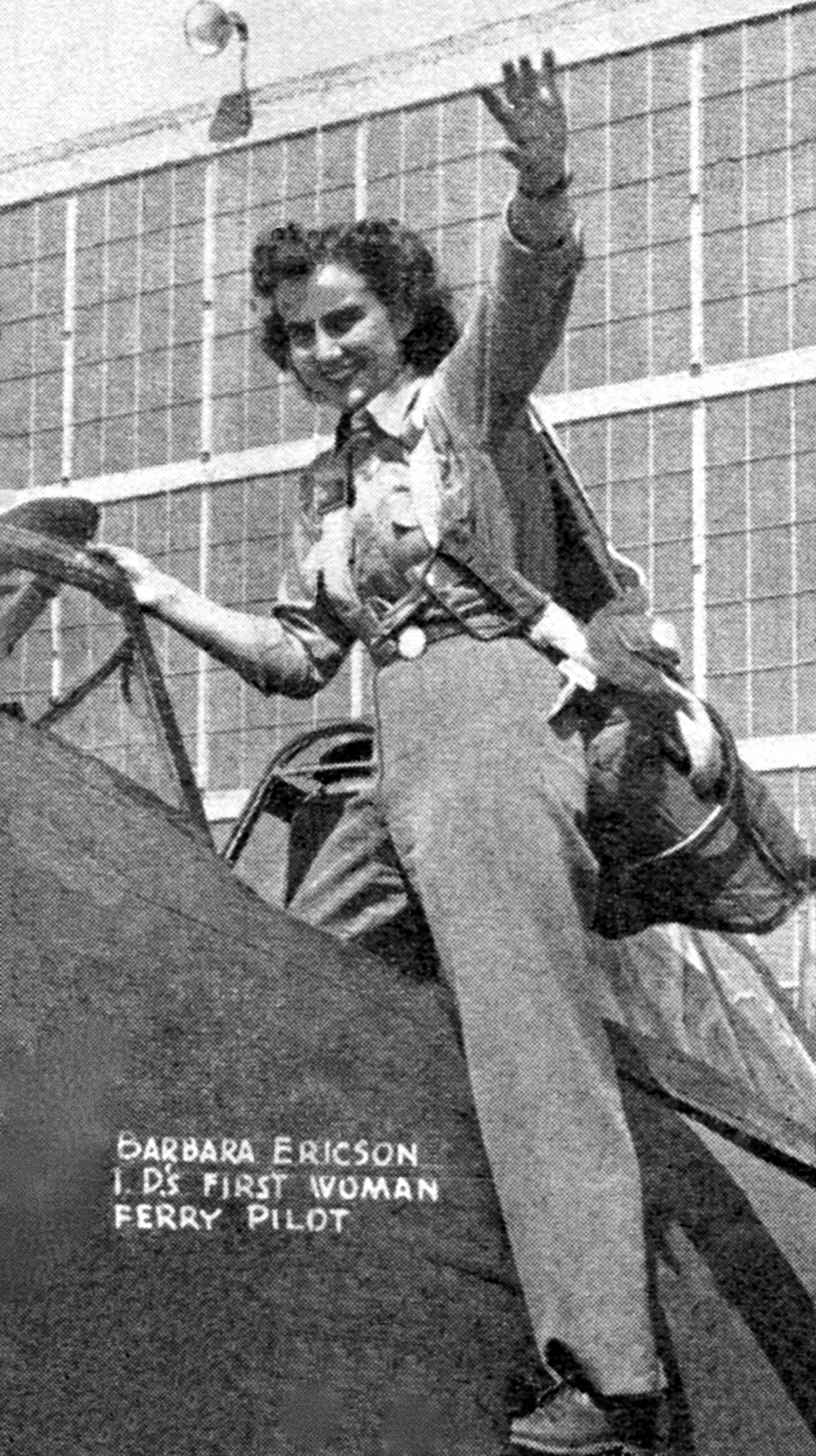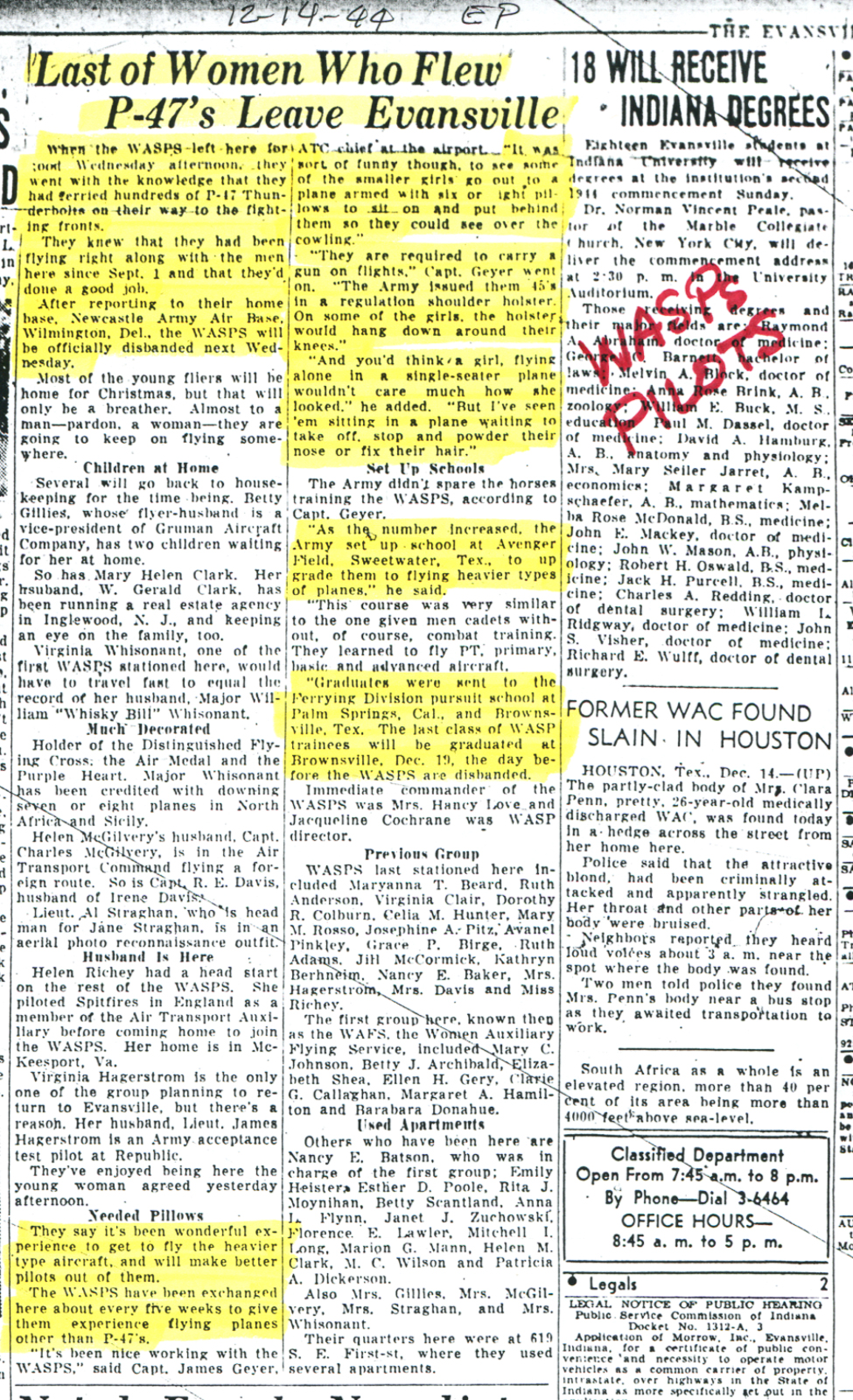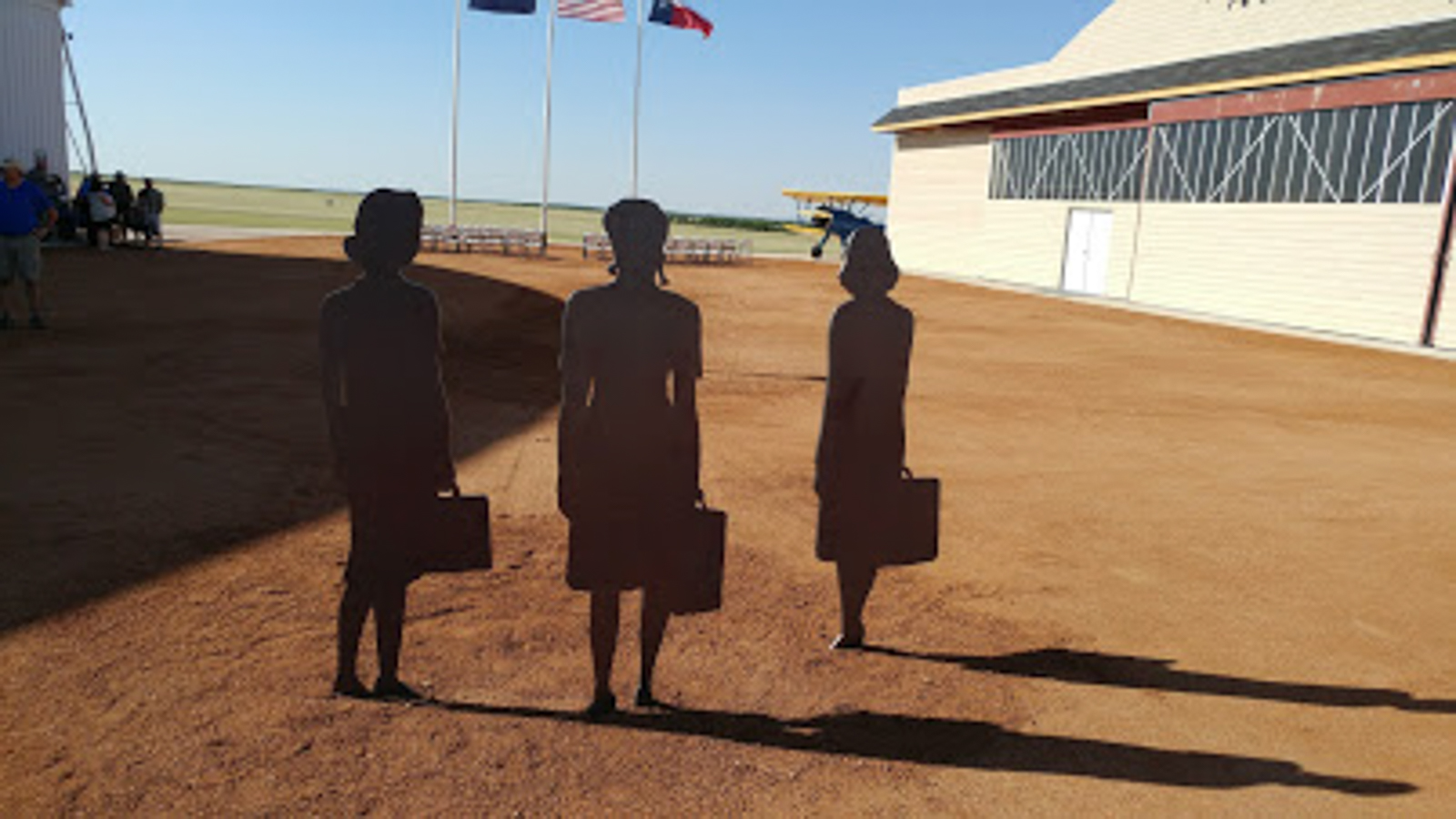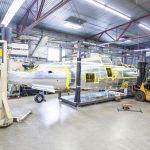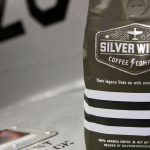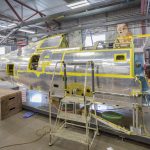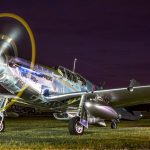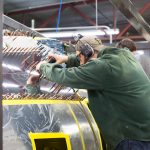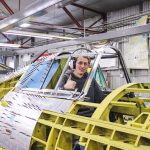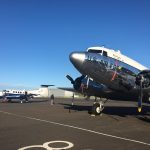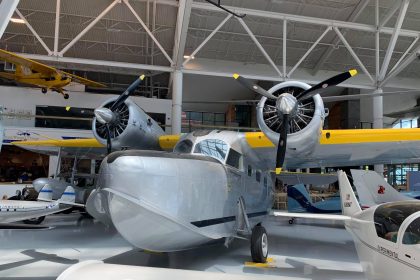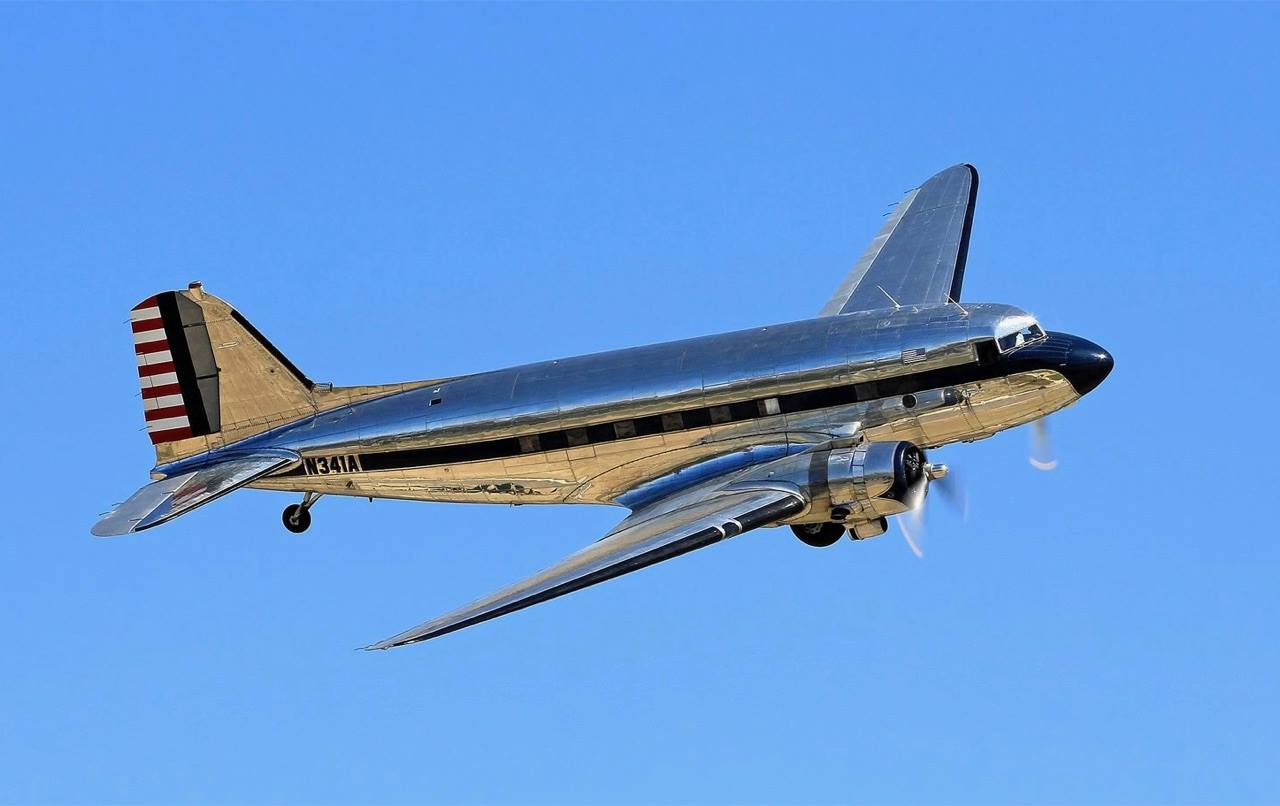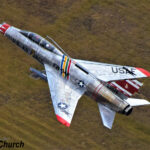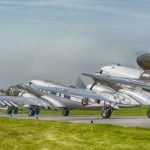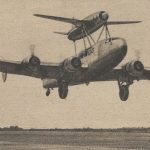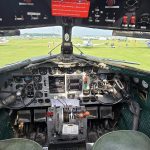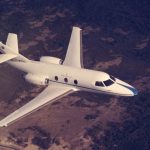WarbirdsNews has just received the May, 2019 report from Chuck Cravens concerning the restoration of the Dakota Territory Air Museum’s P-47D Thunderbolt 42-27609 at AirCorps Aviation in Bemidji, Minnesota. We thought our readers would be very interested to see how the project has progressed since our last article on this important project. So without further ado, here it goes!
Update
This month work progressed on the fuselage, cockpit interior and cockpit enclosure, the same general areas as last month. Equipment installation on a complex, rare fighter like this one takes a lot of time! In this update we will also look into the connections between women pilots and the P-47.
Fuselage
Most of the fuselage work this month centered upon equipment installation.
Inside the Cockpit
Cockpit Enclosure
The WASP and WAF Connection
One of the lesser known and definitely under-appreciated contributions to the war effort came from women pilots. 1,102 women served in either, or both, the Women’s Auxiliary Ferrying Squadron (WAFS) and the Women Airforce Service Pilots (WASP).
The WAFS were hired as civilian ferry pilots, and were organized and commanded by Nancy Harkness Love and the USAAF Ferry Command. Nancy was originally restricted to hiring 25 women, but she eventually hired 27. The women hired for the Ferry Command were all experienced, well-trained pilots, and were required to have at least 500 hours of flying time. In the beginning, the WAFS were only authorized to ferry light trainers and utility aircraft. That policy was soon to change, however, and in time the WAFS/WASP flew every aircraft type in the USAAF inventory.
During the same time period, a second group of women pilots was also established. The Women’s Flying Training Detachment or WFTD was organized and commanded by Jackie Cochran. The WFTD pilots were trained to fly by going through exactly the same pilot training as male Air Force cadets. At its onset, the program was based at the Municipal Airport in Houston, Texas. Once the instruction program was in full swing, it became clear that Houston was too congested, and flight training time was too limited by morning fog and frequent thunderstorms, for efficient training to take place. Therefore, the training program was moved to Avenger Field in Sweetwater, Texas in February 1943. By August, the WAF and WFTD were combined into a single organization, the Women Airforce Service Pilots or WASP.
At the time of combining the two groups, Jackie Cochran was named overall Director of Women Pilots, and Nancy Harkness Love, the Director of the Women Pilots in Air Transport Command.
While the WASP and WAF contributions were varied and numerous, including providing flight training, target towing, flight testing and other missions; the focus here will be on their role in ferrying fighters. The need for ferrying fighters was greater than transports and bombers because, for the most part, they were shipped by sea to combat areas. Bombers and transports were ferried by women pilots as well, but many of these types made the journey by air to the European or other theaters instead of being shipped.
The logistics of getting planes to combat areas presented a real challenge. In the east, Republic Aviation had factories building P-47s in Farmingdale, New York and Evansville, Indiana. Curtiss was building P-40s in Buffalo, New York, and Bell was pushing P-39s and, later P-63s out the doors of their factory in Niagara Falls, New York. Further west, North American Aviation had fighter factories in Inglewood, California and near Dallas, Texas.
A portion of the fighters from each of these widely dispersed factories, was destined for Europe and needed shipping from the port in Newark, New Jersey. Others needed to get to Long Beach or Alameda, California for loading onto aircraft carriers for the journey to the Southwest Pacific or the China, Burma, India Theater. Other fighters went west to Great Falls, Montana, under the Lend-Lease program, to be picked up and flown to Russia, via Alaska.
The location of these factories in relationship to their ports of embarkation required thousands of fighters to be ferried over great distances in the USA. This need was the original impetus for forming the WAFS. Nancy Love set up four ferrying squadrons, the 5th Ferrying Group, at Love Field in Dallas, Texas, the 2nd Ferrying Group at New Castle Army Air Base in Wilmington, Delaware, the 3rd in Romulus, Michigan and the 6th in Long Beach, California [Ref. Sarah Byrn Rickman, WASP of the Ferry Command, (Denton, TX, University of North Texas Press, 2016)].
It was common for WAFS, and later the WASP, to fly a Mustang from Dallas or Inglewood, California to Newark, New Jersey for shipment to Europe, and then for the woman pilots to take ground transportation to one of the Curtiss, Republic or Bell factories in the region to pick up another fighter and fly it west to Long Beach or Great Falls. Many Farmingdale-built P-47s went to Evansville’s modification center to receive new equipment installations suited for the Southwest Pacific or the CBI. These aircraft, as well as Evansville-built Thunderbolts, were then flown by ferry pilots (both male and female) to Long Beach and on to Alameda Naval Air Station for loading onto carriers.
Barbara Erickson became the first WASP to receive the Air Medal for Meritorious Achievement as a pilot. Erickson received her medal for completing four 2,000 mile deliveries of three different types of aircraft in slightly more than 5 days of actual flying. She was also the second woman to check out in the P-51/A-36.
The WASP flew 9,224,000 miles ferrying planes around the continental US and Canada. Thirty Eight WASP died flying missions or training flights.
before the disbanding of the WASP on December 20,
1944. Scanned from Harold Morgan Collection
The WASP were never militarized as an official auxiliary force. As a result, the 38 women who were killed while serving in WASP were not entitled to government-paid burial expenses or survivor benefits. The cost of shipping home the bodies of the dead was often covered by their fellow WASP collecting funds amongst themselves!
Their contributions and sacrifice should never be forgotten.
For more information on the WASP, there are a number of fine books, like Sarah Byrn Rickman’s WASP of the Ferry Command. Also check the National WASP WWII Museum website, or better yet, visit them at Avenger Field in Sweetwater, Texas!
Texas Woman’s University also holds a treasure trove of information in their Women Air Force Service Pilots Digital Archive
And that’s all for this month. We wish to thank AirCorps Aviation, Chuck Cravens (words and images) as well as John LaTourelle (images) for making this report possible! We look forwards to bringing more restoration reports on progress with this rare machine in the coming months.
Is the P-47 Thunderbolt your favorite airplane? Make sure to purchase issue #73 of Warbird Digest featuring the beautiful “Dottie Mae”
